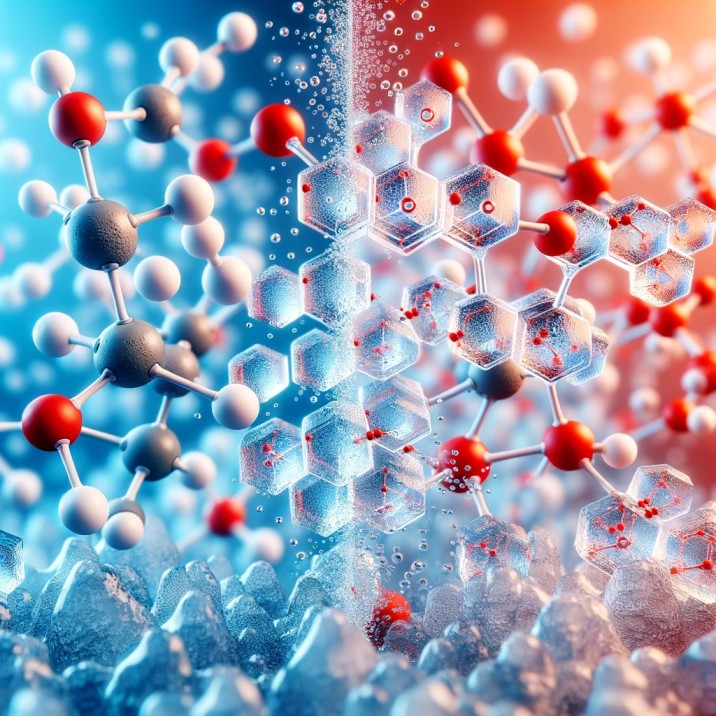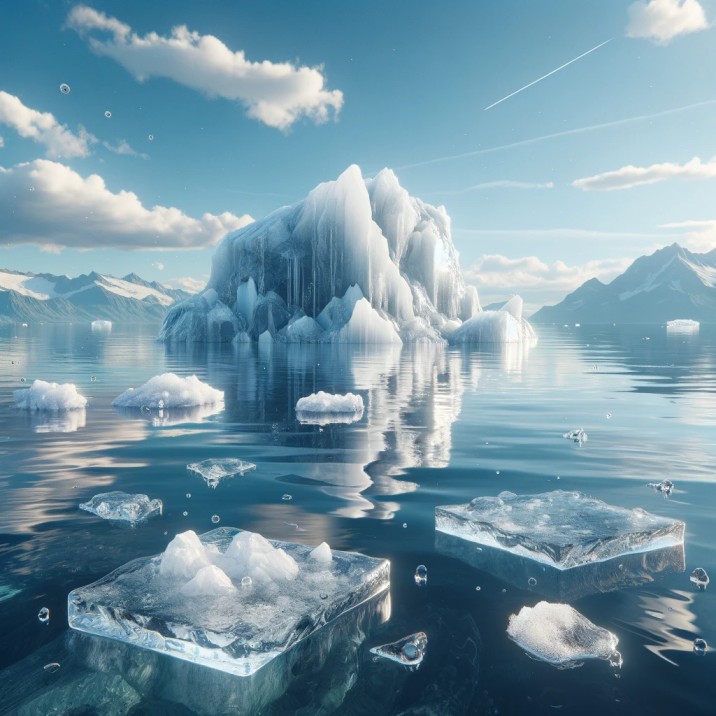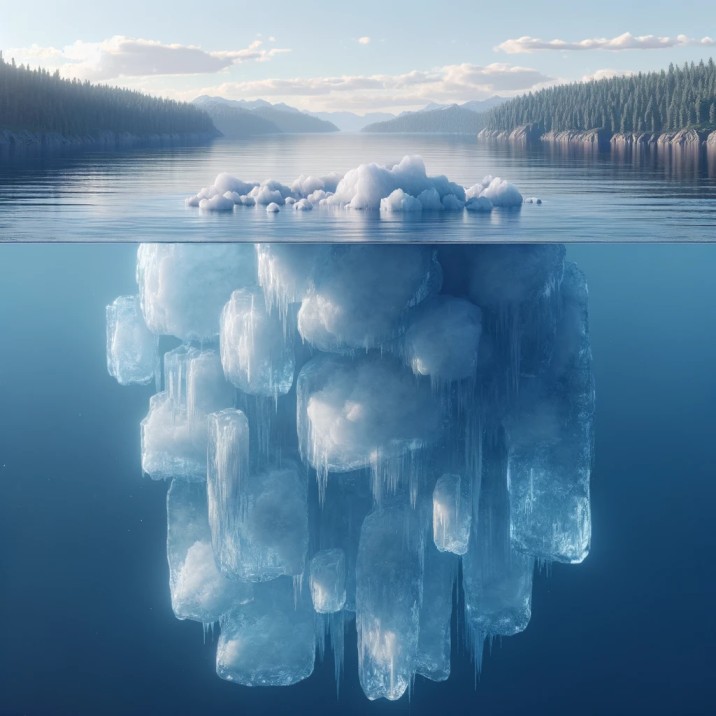Why does ice float on water? The primary reason why ice floats on water is due to differences in density between liquid water and solid ice. Density is defined as mass per unit volume. When water freezes, it expands and becomes less dense than its liquid form. This lower density of ice compared to liquid water results in ice floating when placed in water.
Molecular Structure of Water and Ice

To understand this density change, we must delve into the molecular structure of water. Water molecules consist of one oxygen atom and two hydrogen atoms. In liquid form, these molecules are randomly arranged and constantly moving. When water freezes, the molecules form a crystalline structure, known as a hexagonal lattice, where each molecule is bonded to four others, creating a spacious arrangement.
The Role of Hydrogen Bonding in Ice Formation
The role of hydrogen bonding in ice formation is a fascinating aspect of chemistry and physics, revealing much about the unique properties of water and ice. Understanding this requires delving into the molecular structure of water and how it changes as water freezes.
Water molecules are made up of one oxygen atom and two hydrogen atoms, forming a V-shape. The oxygen atom is more electronegative, meaning it pulls more strongly on the shared electrons. This results in a polar molecule with a partial negative charge near the oxygen and a partial positive charge near the hydrogen atoms.
In liquid water, these polar molecules are attracted to each other. The positive hydrogen end of one molecule is attracted to the negative oxygen end of another, forming a hydrogen bond. These bonds are constantly breaking and reforming due to the movement of the water molecules. This fluid and dynamic network of hydrogen bonds gives water its liquid properties.
As the temperature drops and water begins to freeze, the movement of the water molecules slows down. This allows the hydrogen bonds to stabilize and hold the water molecules in a more fixed position.
In ice, each water molecule forms a hydrogen bond with four neighboring molecules. This leads to the formation of a hexagonal lattice structure. Each oxygen atom is at the center of a tetrahedron, with hydrogen atoms at each corner. This structure is very open and less dense than the arrangement in liquid water. The angles and distances between the hydrogen bonds in ice are more consistent and farther apart compared to those in liquid water.
Because of this hexagonal lattice, ice occupies more space (volume) than the same number of water molecules in liquid form. Thus, ice has a lower density than liquid water. It’s this lower density that causes ice to float on water.
Ecological and Environmental Implications
The ecological and environmental implications of ice floating on water, a result of its unique molecular structure and lower density, are profound and far-reaching. This phenomenon, underpinned by the hydrogen bonding in water molecules, plays a critical role in maintaining the Earth’s climate and sustaining various ecosystems.
In ecological terms, the floating ice acts as an insulating layer on water bodies like lakes and oceans during colder months. This insulation is crucial as it maintains the water temperature underneath, allowing aquatic life to survive even when surface temperatures plummet. If ice were to sink, as most solids do in their liquid counterparts, bodies of water would freeze from the bottom up, devastating aquatic ecosystems and disrupting the life cycles of numerous species.
From an environmental perspective, floating ice, especially in polar regions, significantly influences the Earth’s climate. Ice reflects a large portion of solar radiation back into space, helping to regulate global temperatures. If ice were to sink, this reflective capacity would be lost, leading to increased absorption of solar radiation by the darker oceans and an acceleration of global warming.
Additionally, seasonal ice melt plays a key role in oceanic circulatory systems, affecting salinity and ocean currents. This melting process, crucial for nutrient distribution, also impacts global weather patterns and marine biodiversity.
In summary, the simple fact that ice floats on water is a keystone in the delicate balance of Earth’s ecosystems and climate, highlighting the intricate interplay between physical properties and the natural world.

Ice floats on water primarily due to the density difference caused by the unique molecular structure of water. The formation of a hexagonal lattice in ice, driven by hydrogen bonding, decreases its density compared to liquid water. This phenomenon is not only a fascinating scientific fact but also a crucial aspect of Earth’s environmental and ecological dynamics, demonstrating the intricate interplay between the physical properties of substances and the natural world.


